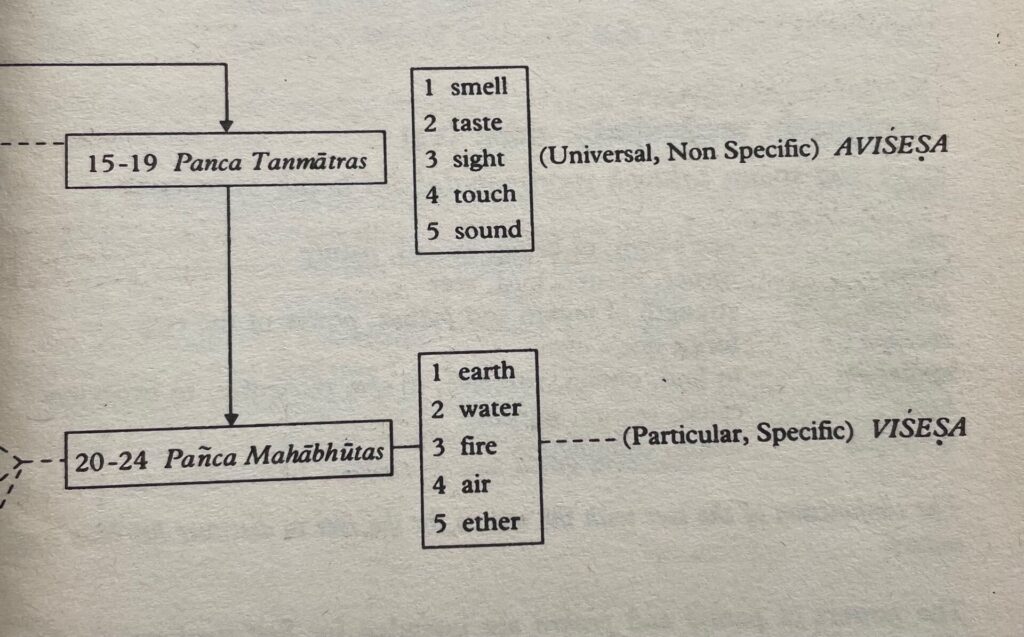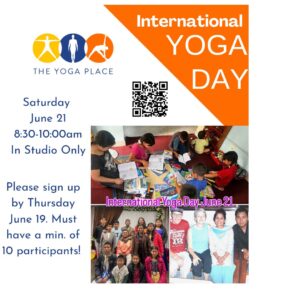Mastery of Elements in Yoga

We discussed the power of “hearing distant and divine sounds” and what that means to each of us. In the end, the idea of “divine” sound was boiled down to pure sound without other distraction or impression, and also sound that penetrates and vibrates within our being. It is not just “hearing” with the anatomy of the ear, but “hearing” with purity. In yoga, we do have concepts of “seed mantras” and the chanting of AUM (OM), all of which vibrate at different frequencies and have different effects on our energetic being.
The ability to integrate with the element of ether recalls the idea of samapatti, or merging with that which a meditator is concentrating upon. If a yogi is so concentrated and integrated with the element of ether, his/her body becomes one with that element, “as light as cotton fiber” with the ability to fly through the air. Ultimately, as the yogi conquers that most subtle element of ether, eliminating the control of all the elements on his or her body, the yogi is able to literally leave the body behind. In this state called mahavideha (the disembodied state), a yogi lives in pure consciousness without the pull or hindrance of mental or physical disturbances.
As we look forward to the next 3 sutras, we will continue to discuss the elements and their mastery through the practice of yoga. Each element has a place in the cosmology of the Universe and within our own experience. We started to discuss the effect of these elements in our yoga practice last meeting and will continue more in depth with our next. The 5 subtle elements referred to as the tanmatras – smell, taste, sight, touch, and sound – come together in varying ways and degrees to evolve the 5 gross elements referred to as the mahabhutas – earth, water, fire, air, and ether. Another way to say it is that the gross elements (mahabhutas) are experienced through more subtle properties (tanmatras). As with every layer in the practice of yoga, once we know any aspect of our being from the gross to the subtle and back again, we gain control of our own Self and our movement and experience in the world – Ultimate freedom through complete knowledge and understanding of the Universe. It is why yoga is a practical “science” as much as it is a philosophy or art.
We will discuss the next three sutras on Sunday, June 5th at 11:00am CST via ZOOM. The following are the translations found in the third chapter of “Light on the Yoga Sutras of Patanjali” by BKS Iyengar – note that numbers in different translations may vary at this point as some leave out repetitive sutras.
III.45 : By samyama (integration) on the elements – their mass, forms, subtlety, conjunction and purposes, the yogi becomes Lord over them all.
III.46 : From that arises perfection of the body, the ability to resist the play of the elements, and powers such as minuteness.
III.47 : Perfection of the body consists of beauty of form, grace, strength, compactness, and the hardness and brilliance of a diamond.
Below are some contemplations to prepare for our next discussion…
- Do you have a feel for how the elements show up in your practice of yoga? How?
- Are there any ways you particularly and consciously use the elements within your practice? We touched on this briefly last discussion with questioning if we use practice to feed our innate tendencies or try to balance them out?
- What does “perfection of body” mean to you?
- Have you found a new sense of physical perception within your practice of yoga? Form, grace, strength ? In what ways or not?
- There are a lot of comparisons to a diamond within the sutras and in commentaries. How do you interpret this idea of the “hardness and brilliance of a diamond” in regards to perfection of body and elemental conquest?
